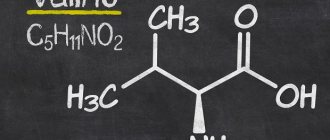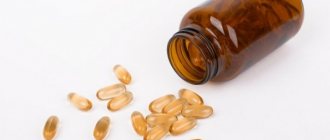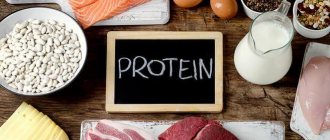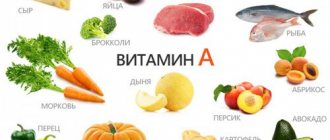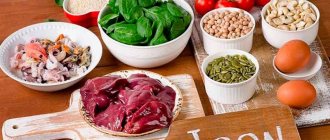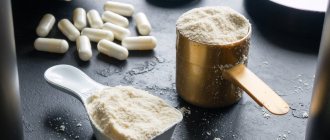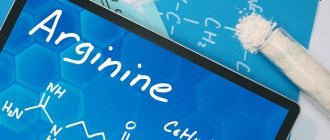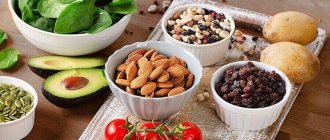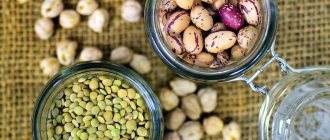Valine is an essential amino acid with a branched chain of carbon sequences. One of three amino acids with a similar structural formula. Its brothers are leucine and isoleucine. All three amino acids are included in the group of branched chain amino acids or BCAA (BCAA) from the English Branched-Chain Amino Acids. These three amino acids are inseparable friends and should be consumed together, because together they perform their functions in the body.
Read the article to the end and you will find out:
- what functions does valine perform in the body?
- why valine is essential for muscle building,
- what foods contain valine,
- daily requirement for valine
- conditions in which the need for valine increases
- symptoms of excess valine intake
Galina Baturo and the amino acid valine are with you
Valine is an essential proteinogenic amino acid with a branched aliphatic radical. What do these terrible words mean? Amino acid is a class of organic, i.e. produced by living organisms, compounds in which there is an amine head NH2 and a carboxyl tail COOH, which gives the compound acidic properties. Read more about the classes of amino acids here: Structure of amino acids: structural formulas and classifications.
Chemical properties
Valine is a widely distributed aliphatic alpha amino acid and is one of the 20 proteinogenic essential amino acids . The compound was first isolated from casein in 1901 by chemist E. Fischer.
Chemical formula of Valine: HO2CCH(NH2)CH(CH3)2 , racemic formula of Valine: C5H11NO2 . Molecular mass of the compound = 117.15 grams per mole, density of the substance is 1.230 grams per ms3. The structural formula of Valine is discussed in detail in the Wikipedia article. The product has 2 spatial isomers D and L. The amino acid is synthesized in the form of colorless crystals. L-Valine is highly soluble in water and aqueous solutions of alkalis, but poorly soluble in organic solutions.
The substance can be synthesized by the action of NH3 on alpha-bromoisovaleric acid . Since 1982, the product has been produced all over the world, at approximately 150 tons per year. In a living organism, the amino acid is one of the main components involved in the processes of growth and synthesis of living tissues, increases muscle coordination and reduces the body’s sensitivity to pain and other adverse environmental factors. The main sources of Valine are: chicken, salmon and beef; cow's milk, eggs, walnuts; wheat and corn flour; peas and brown rice.
Regulatory function of valine
Valine is involved in regulating the functioning of the pituitary gland: a gland in the brain that tunes the body’s hormonal orchestra. It stimulates the production of growth hormone, which supports protein synthesis as opposed to protein breakdown.
In alcoholism and drug addiction, characteristic imbalances of amino acids have been identified, incl. with a branched chain, among which valine plays an important role. In emotional disorders associated with addiction, brain cells require more energy, which they obtain by utilizing branched chain amino acids, particularly valine. The breakdown of proteins in areas of the brain that respond to the regulation of emotions and the general tone of the body is activated, which leads to disruption of the functional activity of these areas and an increase in feelings of depression and irritability.
Valine affects the production of the hormone of joy - serotonin. Valine deficiency provokes depression, and, conversely, when amino acids are in balance, mood improves, a person experiences a surge of vigor and an increase in overall vitality, which is why valine is used to treat depression. Valine and tryptophan are competitors for transport when crossing the blood-brain barrier. Excess valine inhibits the accumulation of tryptophan in the brain and, in case of overdose, can lead to impaired brain function, including hallucinations.
In alcoholic encephalopathy (impaired brain function), due to poor liver function poisoned by alcohol, the concentration of aromatic amino acids (tryptophan, phenylalanine) in the blood increases and the number of branched chain amino acids (valine, leucine, isoleucine) decreases. As a result of competition for transport that carries amino acids across the blood-brain barrier, the concentration of valine in the brain decreases and tryptophan increases. This does not lead to anything good, because the absence of branched amino acids deprives the brain of energy to produce neurotransmitters. An energy-deficient brain plunges into depression and begins to work through the roof, which is externally expressed in a weakening of mental parameters.
The amino acid valine is used to treat drug and alcohol addiction, because alcoholism and drug addiction lead to severe amino acid deficiency. Additional consumption of valine helps prevent relapses and prolongs remission.
Valine improves muscle coordination and reduces sensitivity to pain. It improves adaptability to heat and cold. Being a glucogenic amino acid, it suppresses appetite and reduces sugar cravings through regulating blood sugar levels.
Pharmacodynamics and pharmacokinetics
This amino acid plays a key role in the processes of synthesis and growth of body tissue, is a source of energy for muscle cells, and prevents a drop in serotonin and the development of depression . The substance significantly improves the quality of muscle coordination and reduces the body's sensitivity to cold, heat, pain and stress. The drug has the ability to protect the myelin sheath , an important part of the nerve fibers of the brain and spinal cord. This substance is necessary for the body to maintain normal nitrogen metabolism.
The product achieves its maximum effectiveness in combination with leucine and isoleucine . This amino acid is essential, meaning the body cannot synthesize it on its own. Once the substance enters the systemic circulation, it is completely metabolized and does not accumulate in tissues.
Metabolism of valine
Valine is an essential amino acid. The body does not synthesize this compound, and it must come from outside through food.
Branched chain amino acids (valine, leucine, isoleucine) account for about 45% of the content of all essential amino acids in tissues. Branched amino acids prevent the breakdown of proteins to the same extent as the introduction of a full set of amino acids.
Once in the gastrointestinal tract, valine enters the liver. The liver lacks enzymes to metabolize branched chain amino acids. It delays other amino acids for biochemical transformations, and branched ones, incl. Valine gives the green light to enter the general bloodstream. As a result, the amino acids of food protein are separated, and predominantly a mixture of branched chain amino acids is sent to the muscles, the same three friends - valine, leucine, isoleucine. It is there that they enter into amino group transfer reactions, providing muscles with energy.
The formation of a pool of free branched chain amino acids in the liver depends on the content of taurine, which regulates the conversion of amino acids into glucose.
In muscles, branched-chain amino acids are included in muscle protein synthesis, forming a reserve from which they can be mobilized during exercise. During work, muscle protein breaks down, and branched amino acids enter a chain of biochemical transformations, the end product of which is glucose, which provides energy for work. It must be said that the intramuscular fund of free amino acids remains constant throughout the work, but after the load it increases, i.e. there is a certain inertia of the biochemical conveyor.
The need for valine is 3 - 4 g per day.
Minimum daily requirement for an adult: 14 mg. per 1 kg. body weight, for children - 110 mg. per 1 kg. body weight. You should not focus on the minimum daily requirement; it is not physiological, ensuring survival, but not a full life.
Indications for use
The amino acid Valine is prescribed in combination with other medications:
- to provide parenteral nutrition ;
- as a preventive and therapeutic agent for intense loss of proteins by the body;
- for injuries, burns, sepsis and peritonitis ;
- after extensive surgical interventions;
- as part of complex treatment of inflammatory bowel and gastrointestinal diseases;
- for depression , drug addiction, multiple sclerosis ;
- as a prophylactic agent during increased physical activity.
Valine deficiency
The lack of valine in the body can be either absolute, when there is insufficient supply of the amino acid from food, or relative, when the need for this amino acid increases due to physiological or pathological processes in the body.
With a vegetarian diet, it is very difficult to maintain protein balance: if you mindlessly lean on just vegetables and fruits, it is very easy to get problems associated with a lack of amino acids, primarily essential ones. Valine deficiency can also occur when it is insufficiently absorbed in the gastrointestinal tract due to diseases of the digestive system.
The need for valine increases due to the following conditions:
- Sports training, especially those related to strength and endurance
- Stress, both psychological and physiological: injuries, burns, previous surgeries, blood loss, etc.
- Pathological addictions: addiction to alcohol, drugs, incl. nicotine, and just a craving for sweets and a desire to eat everything indiscriminately.
- Diseases of the central nervous system: multiple sclerosis, depression
- Acute infectious diseases: ARVI, pneumonia, etc.
A lack of valine has a depressing effect on the nervous system. People suffering from a deficiency of this amino acid may experience fatigue, irritability, and depression. People struggling with alcohol or drug addiction may return to addiction if they are deficient in valine.
Drugs containing (Analogs)
Level 4 ATC code matches: Infezol
Dextrose
Medicines containing the amino acid Valine: Aminoven , L-Valine , Aminoplasmal B. Brown E 10 , Aminoven Infant , Kabiven , Aminosol-Neo , Aminoplasmal E , Aminosteril , Infezol , Moriamin , Nephrotect , Nutriflex , Cerebrolysate , Hymix .
Valine: structural formula
An aliphatic radical is a hydrocarbon chain attached to the same carbon as the amine head and carboxyl tail. The carbon skeleton of valine is one carbon larger than alanine, but not one carbon sequence, but two, is attached to the second carbon atom (in the β-position), i.e. The amino acid appears to be bifurcated at one end, which is why it is called a branched-chain amino acid.
Being a proteinogenic amino acid, valine is part of the body's proteins.
Like other amino acids (except glycine), valine exists in two optical stereoisomers: left-handed (L) and right-handed (D). Only L-valine is found in natural proteins; D-valine is formed as a result of chemical synthesis and is a ballast amino acid that loads the liver.
Valine is one of the essential amino acids for humans.
Valine is a hydrophobic amino acid and belongs to the non-polar amino acids.
Valine is one of 20 proteinogenic amino acids and is part of almost all known proteins.
Valine is 2-amino-3-methylbutanoic or α-amino-isovaleric acid.
Valine ( Val, Val , V ) is an aliphatic α-amino acid HO2CCH (NH2) CH (CH3)2, named after the valerian plant.
Valine was first isolated by E. Fischer in 1901 from casein.
Daily requirement
For an average person, the daily intake of valine is, on average, 3-4 grams per day.
Physical properties
Valine is a solid crystalline substance, highly soluble in water, but practically insoluble in alcohol and ether. The melting point of valine is 3150C.
Main functions of valine
Growth and synthesis of body tissues, energy of muscle cells, muscle coordination, nitrogen metabolism, protection of the myelin sheath of nerves, regulation of nervous processes, stabilization of hormonal levels, formation and storage of glycogen, protein synthesis.
Metabolism
Valine is necessary for muscle metabolism, repair of damaged tissues and for maintaining normal nitrogen metabolism in the body. In the case of a negative nitrogen balance, the body is forced to break down functioning tissues and skeletal muscles to produce energy. Most often, this does not pose a big threat, since in an adult body the protein content is relatively constant and as many amino acids are oxidized as a person receives from food.
It is a branched amino acid, which means it can be used by muscles as an energy source.
Valine is often used to correct severe amino acid deficiencies resulting from drug addiction.
Biological role
Valine is found in all organisms in free form and is present in proteins, found in muscle tissue and the nervous system.
Valine is one of the main components in the growth and synthesis of body tissues.
Together with leucine and isoleucine, it serves as a source of energy in muscle cells and also prevents a decrease in serotonin levels. Valine increases muscle coordination and reduces the body's sensitivity to pain, cold and heat.
When there is a lack of carbohydrates in the body, valine is converted into glucose (gluconeogene) or glycogen through oxaloacetic acid and phosphoenolpyruvic acid.
Valine is also necessary to maintain normal nitrogen metabolism in the body. The absence of valine in food makes it deficient in protein and leads to a negative nitrogen balance.
Serves as one of the starting substances in the biosynthesis of pantothenic acid (vitamin B5) and penicillin.
The Valine content in protein usually ranges up to 7-8% (human serum albumin, milk casein), in some cases – 13-14% (connective tissue elastin).
Natural springs
The main source of valine is animal products. It is found in all organisms in free form and as part of proteins (especially in albumin, casein, and connective tissue proteins).
Among the fish, the richest in this substance are tuna, smelt, herring, red and black caviar.
Valine is also found in meat - pork, beef and veal, as well as in elk and wild boar meat. This amino acid is found in eggs (yolk) and in poultry itself - chicken, duck, ostrich, pheasant.
Dairy products are another available source of valine: milk (both regular and skim), various types of soft and hard cheeses.
From products of plant origin: seeds, nuts and legumes - walnuts, peanuts, pistachios, watermelon seeds, sunflower seeds, soy.
Cocoa powder, lentils, cornmeal, rice, peas and dried parsley are rich in valine.
A lack of valine has a depressing effect on the human nervous system. People suffering from a lack of this amino acid may experience irritation, fatigue, depression, and multiple sclerosis. People struggling with bad habits - smoking, drug addiction, alcoholism - may experience a breakdown due to a lack of valine.
Excessively high levels of valine can lead to symptoms such as paresthesia (pins and needles sensation) and even hallucinations.
Areas of use
Used to treat painful addictions and amino acid deficiency caused by them, drug addiction.
Valine is often used to correct severe amino acid deficiencies resulting from addiction to medications and components of parenteral protein nutrition.
Valine is also used to treat depression, as it acts as a mild stimulant compound. Helps prevent neurological diseases and treat multiple sclerosis by protecting the myelin sheath that surrounds nerve fibers in the brain and spinal cord.
Valine is recommended for use in muscle building programs and in conventional multicomponent complexes as an aid to protein metabolism.
Valine, leucine and isoleucine are required for the following conditions and diseases: intense physical training, stress, rehabilitation after surgery, AIDS, cancer, protein deficiency, etc.
dietary supplements
Valine is used in the form of dietary supplements along with other branched amino acids (leucine, isoleucine).
BCAA is a complex of three branched chain amino acids - valine, leucine and isoleucine. They are important components of proteins. Unlike other amino acids, they are not synthesized by the body, and therefore must be obtained from food.
These three amino acids are combined into one complex because they act together and “help” each other in their work.
BCAAs release energy directly into muscle fibers, primarily serving as muscle “fuel” that lasts throughout the entire duration of use.
Taking dietary supplements containing BCAA (valine, isoleucine, leucine) has a strengthening effect on muscles and is indicated for tissue restoration in cases of liver and gall bladder diseases.
Taking complete amino acid supplements after intense training is essential for effectively restoring depleted muscle tissue.
Strenuous muscular activity, such as bodybuilding and other strength and speed-strength sports, entails wear and destruction of some contractile proteins. During the process of restoration, these structures replenish the plastic material from which they are composed.
Branched chain amino acids are of particular value during periods of recovery. Therefore, for effective training, you should regularly consume BCAAs in your sports diet - they play a serious role in gaining pure mass and protecting muscles.
The absorption of free amino acids does not require additional energy and does not inhibit the restoration of energy reserves in muscle cells.
Amino acids
Classification of amino acids
Pharmacological properties
The very name of the amino acid suggests that its main property is its effect on the central nervous system with the regulation of the processes of inhibition and excitation.
In addition, she:
- exhibits a stimulating effect;
- enhances regeneration processes in the body;
- increases tissue resistance to external influences;
- resists stress and mental strain;
- actively counteracts the development of alcohol and drug addiction;
- balances metabolism, reducing appetite and promoting weight loss;
- reduces the threshold of pain sensitivity, especially when exposed to temperature;
- regulates the production of growth hormone, hemoglobin, nitrogen concentration in the body;
- improves the condition of common sclerosis.
Food sources
Since valine is an essential amino acid, its concentration in the body depends solely on its intake through foods. The top amino acid content in food products in correlation with nutritional value is presented in the table.
| 100 g of product | Amino acid in mg |
| Cheese: Parmesan, Edam, goat, processed, Swiss | 2500 |
| Cottage cheese, eggs, milk, yogurt | 2400 |
| Soybeans, legumes, nuts, corn | 2000 |
| Sea kale, seafood | 1950 |
| Meat (except pork) | 1900 |
| Poultry, fish (except tuna), pork (tenderloin) | 1600 |
| Pumpkin seeds | 1580 |
| Tuna | 1500 |
| Mushrooms, wild rice, buckwheat, pearl barley | 400 |
| Whole grains | 300 |
B5 is most easily absorbed from nuts and eggs.
Foods rich in valine:
Although most people only consume valine from supplements such as BCAA, the amino acid can also be obtained through diet. There are some foods rich in this nutrient that can enhance your diet and help you gain muscle mass.
These include dairy products, eggs, soy and its derivatives, red meat and chicken, legumes (lentils, beans, chickpeas, roasted peanuts, etc.), whey protein, fruits and vegetables (potatoes, broccoli, etc.). ), fish, nuts and seeds (sesame seeds, chia seeds, almonds, pumpkin seeds, sunflower seeds, watermelon seeds, cashew nuts, flaxseeds, etc.), mushrooms and whole grains.
Excess valine
Consumption of valine in too high doses is not indifferent to the body, so you should not exceed the recommended daily dosage - more than 4 g. At best, an overdose manifests itself in paresthesia: a feeling of numbness in the limbs, crawling sensations, allergic reactions, dermatitis, indigestion, and increased anxiety are possible. Regular overdoses can lead to thickening of the blood, cause liver and kidney dysfunction, and increase ammonia levels in the body, which manifests itself in nausea and vomiting. With a strong excess of valine, chills, rapid heartbeat, fears, and even hallucinations occur.
